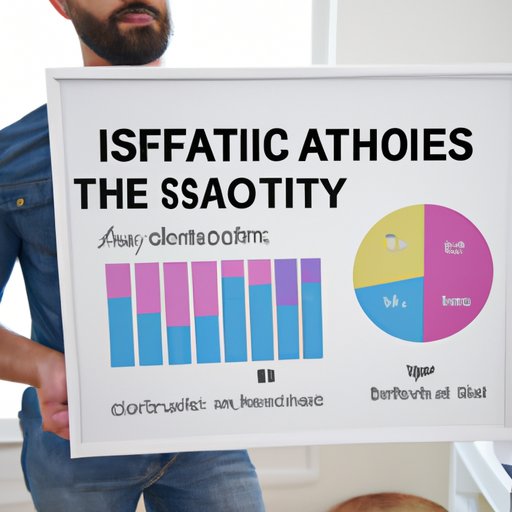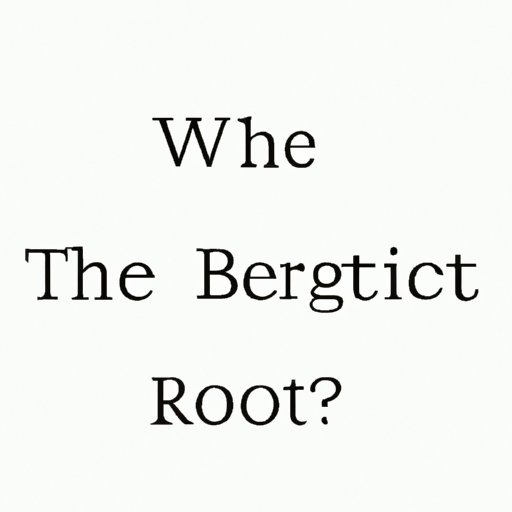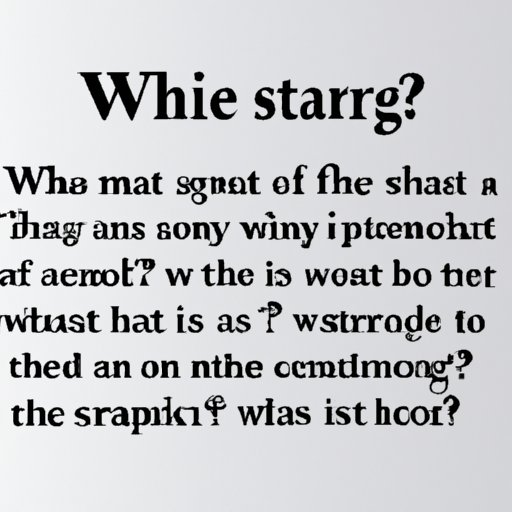Introduction
The way you start off a paragraph can be the difference between an engaging piece of writing and one that falls flat. A strong opening sentence sets the tone for the entire paragraph, and encourages readers to continue reading. Knowing how to effectively start off a paragraph can help writers capture the attention of their audience and keep them interested in the content. This article explores eight effective ways to start off a paragraph and keep readers engaged.
Ask a Thought-Provoking Question
Asking a thought-provoking question is one of the best ways to start off a paragraph. Thought-provoking questions are those that require readers to think critically and make connections between different ideas or concepts. They can be used to introduce a new topic or provide insight into an existing one. When crafting a thought-provoking question, it’s important to ensure that it is relevant to the topic at hand and open-ended enough to encourage discussion.
For example, if you were writing a paragraph about the importance of exercise, you could begin with a thought-provoking question such as, “What would our lives look like if we all made time for physical activity every day?” This question is likely to inspire readers to reflect on their own habits and consider the potential benefits of making exercise a priority.

Introduce an Interesting Fact or Statistic
Another great way to start off a paragraph is by introducing an interesting fact or statistic. Facts and statistics can be powerful tools for capturing the reader’s attention and providing evidence to support your argument. For example, if you were writing a paragraph about the impact of climate change, you could start with a statistic such as, “According to the World Meteorological Organization, global temperatures have increased by 1.1°C since pre-industrial levels.” This statistic immediately provides readers with an understanding of the magnitude of the issue.
When selecting facts or statistics to use in your writing, it’s important to ensure that they are accurate and relevant to the topic at hand. Additionally, it’s a good idea to cite the source of the information in order to provide your readers with a reliable reference.

Begin with a Quote from a Famous Person
Using a quote from a famous person is another great way to start off a paragraph. Quotes can be used to introduce a new topic or emphasize a point that you’re trying to make. When selecting a quote, it’s important to choose one that is relevant to the content of your paragraph and resonates with your audience. For example, if you were writing a paragraph about the power of education, you could start with a quote from Nelson Mandela such as, “Education is the most powerful weapon which you can use to change the world.”
When using quotes in your writing, it’s important to provide the source of the quote and any necessary context. Additionally, avoid using overly long or complicated quotes as this can disrupt the flow of your writing.
Start with a Vivid Description
Beginning a paragraph with a vivid description is another effective technique for drawing readers in. Vivid descriptions are those that use sensory language and evoke strong emotions in readers. For example, if you were writing a paragraph about the beauty of nature, you could start with a sentence such as, “The sun glinted off the rippling lake, creating a kaleidoscope of colors across the water.” This sentence paints a clear picture of the scene and is likely to captivate readers.
When crafting vivid descriptions, it’s important to use precise language and avoid cliches. Additionally, pay attention to the tone of your description and the emotions that it evokes in readers.
Establish Context for the Topic
Starting a paragraph by establishing context is another effective technique for engaging readers. Context refers to the background information that is necessary for understanding the content of a paragraph. Establishing context helps to orient readers and ensure that they are able to follow along with the content of the paragraph. For example, if you were writing a paragraph about the history of the civil rights movement, you could start with a sentence such as, “The civil rights movement began in the 1950s as a fight for racial equality in the United States.” This sentence provides readers with the necessary background information to understand the rest of the paragraph.
When establishing context, it’s important to include only relevant and necessary information. Additionally, avoid going into too much detail as this can cause your paragraph to become overly lengthy and confusing.
Use a Surprising Statement
Using a surprising statement is another effective way to start off a paragraph. Surprising statements are those that catch readers off guard and challenge commonly held beliefs. When crafting a surprising statement, it’s important to ensure that it is relevant to the topic at hand and supported by evidence. For example, if you were writing a paragraph about the importance of failure, you could start with a sentence such as, “Failure is essential for success.” This statement is likely to pique readers’ interest and encourage them to continue reading.
It’s also important to recognize that surprising statements can be controversial and may not resonate with all readers. If you’re unsure about whether a statement is appropriate for your writing, it’s a good idea to discuss it with a trusted colleague or mentor.

Begin with a Rhetorical Question
Beginning a paragraph with a rhetorical question is another effective technique for grabbing readers’ attention. Rhetorical questions are those that do not require a response and are used to make a point or challenge readers’ thinking. For example, if you were writing a paragraph about the importance of taking risks, you could start with a rhetorical question such as, “What would life be like if we never took risks?” This question encourages readers to consider the potential consequences of avoiding risk and reinforces the point of the paragraph.
When crafting rhetorical questions, it’s important to ensure that they are relevant to the topic at hand and open-ended enough to encourage reflection. Additionally, avoid using overly long or complicated questions as this can disrupt the flow of your writing.
Conclusion
Starting off a paragraph effectively can be the difference between an engaging piece of writing and one that falls flat. There are several effective techniques for starting off a paragraph, including asking thought-provoking questions, introducing interesting facts or statistics, using quotes from famous people, creating vivid descriptions, establishing context, making surprising statements, and composing rhetorical questions. By utilizing these techniques, writers can capture the attention of their readers and keep them engaged in the content.
(Note: Is this article not meeting your expectations? Do you have knowledge or insights to share? Unlock new opportunities and expand your reach by joining our authors team. Click Registration to join us and share your expertise with our readers.)
